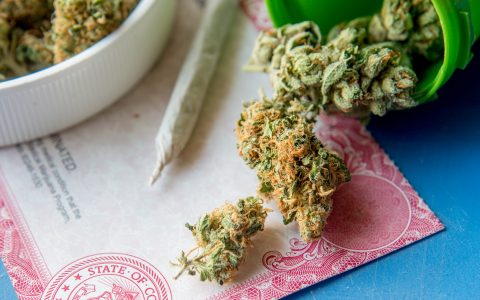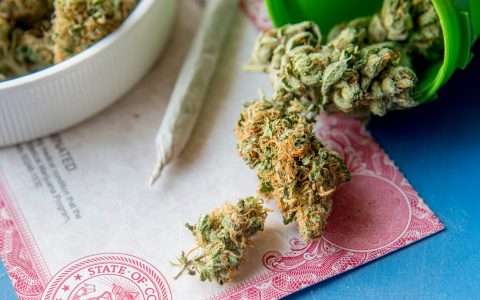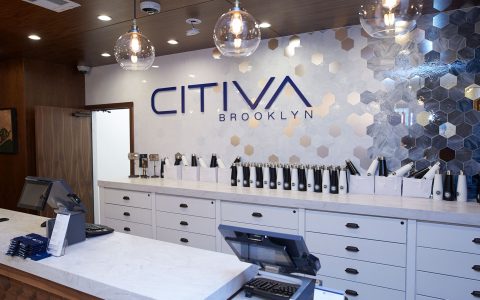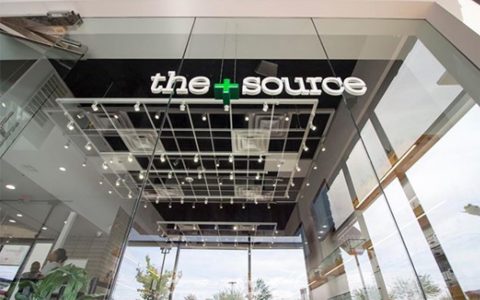Recovering from shoulder surgery is never fun. One incision in my armpit, two weeks of narcotic pain relievers, one month in a sling, and six months of physical therapy brought me sort of back to normal. But two years passed before I was completely pain free. Then the unthinkable happened: I injured the other shoulder. On an early autumn afternoon, I fell off a dock into the Hudson River, and a very nice man pulled my me out by my right arm. The minute I was back on dry land, my first thought was Oh god, he tore my other shoulder.
The thought of recovering from shoulder surgery again, with another round of opioids, terrified me. Before heading under the knife one more time, I decided it was time to try medical cannabis.
Meet New York’s MMJ Program
New York has a medical marijuana program, but because dispensaries still can’t sell cannabis flower—or edibles, or topicals, or concentrates. It’s easy to see why so few New Yorkers are getting their medical cards. Arizona, a state with 7 million people, has 184,000 registered medical cannabis patients. New York, a state with nearly three times the population, has less than half as many medical cannabis patients.
Still, I wanted to give it a try. I wanted access to cannabis-derived CBD. I’d been using hemp-derived CBD to help treat my shoulder pain, and it provided some relief, but it didn’t compare to the strength of the medicine I’ve obtained from dispensaries in California.
Step 1: Do You Qualify?
Before you visit a physician, you should probably have a sense for whether your condition qualifies for a medical cannabis card under New York law.
You may be eligible for medical marijuana if you’ve been diagnosed with one or more of the following severe, debilitating, or life threatening conditions:
- cancer
- HIV infection or AIDS
- amyotrophic lateral sclerosis (ALS)
- Parkinson’s disease
- multiple sclerosis
- spinal cord injury with spasticity
- epilepsy
- inflammatory bowel disease
- neuropathy
- Huntington’s disease
- post-traumatic stress disorder (PTSD)
- chronic pain, defined as pain that degrades health and functional capability
Step 2: See a State-Registered Doctor
I decided to go the online route for my evaluation. I found PrestoDoctor, which offers a 15-minute evaluation with a physician, usually same-day, for a fee of $139.99. This is significantly higher than evaluation fees in other states. California evaluations, for example, are $49.99.
I asked PrestoDoctor co-founder Rob Tankson about the cost difference. “The [medical cannabis] program in California has been around longer, and as a result, there are more physicians who offer medical cannabis evaluation,” he told me. “Doctors also only require a medical license in order to issue a cannabis recommendation. New York is a newer market, and there’s not as much access.”
In fact, anyone with a medical license can recommend cannabis in California. In New York, only physicians registered in the state health department’s medical marijuana program can do so. (The Department of Health has them listed here.)
I had a quick video chat with Buffalo-based physician Dr. Jaclyn Schneider, whose office had mocha-colored walls decorated with diplomas and subtle, tasteful art. A quick chat about chronic pain, and I was approved. My recommendation letter arrived via email the next day.
Step 3: Register Online
The next step was to register as a medical patient on the New York State Health Department website. That required creating an online account and entering some numbers from the recommendation letter. The state’s Compassionate Care Act requires the Health Department to charge a $50 application fee, but the Department is currently waiving the fee for all patients and caregivers.
Once my online paperwork was done, my temporary card was available immediately. Two weeks later my real card arrived in the mail. When I opened the envelope, I felt like I’d somehow legitimized the last 30 years of my life.
Step 4: Visit a Dispensary
I took my card and recommendation to Curaleaf’s location in Newburgh, which is only 10 minutes away from my house. That’s convenient for me, but maybe not for others—it’s one of only two dispensaries serving the entire Hudson Valley. (Fortunately, Curaleaf offers delivery throughout the Valley, and Rockland and Westchester Counties.)
The dispensary sits on a busy stretch of highway between a Burger King and a diner, and you’d only know from the leaf logo (not, mind you, a cannabis leaf) and moss wall behind the counter that they sold anything related to plants.
Curaleaf offered medical cannabis in the three New York-approved forms: tinctures, capsules, and vape cartridges. “The capsules are for old people,” said my patient consultant, a cheerful, 50-something woman named Sandra, who explains the process and products to customers before their first purchase. We sat at a desk in a sunny cubicle, the kind of cubicle you might sit in to open a checking account.
Step 5: Enjoy Relief
Despite being someone who thinks Sour Diesel and Alaskan Thunder Fuck are legitimate names for medications, the only varieties of cannabis I could buy at Curaleaf were aqua, blue, yellow and green.
The colors indicate the ratio of THC to CBD. For example, blue products are a 20:1 THC:CBD blend. Yellow are 1:20. If you buy a blue vape cartridge or disposable vape pen, you can choose an indica, sativa, or hybrid strain. It’s certainly better than nothing, but the difference between buying cannabis in New York and California is the difference between obtaining your protein at Chipotle and eating your way through an artisanal organic buffet.
Still, the ability to know cannabinoid content is a big leap for New York consumers, even if we still don’t know the strain names. I left with a blue sativa cartridge and a yellow disposable pen. And after I had shoulder surgery this time, I needed exactly three days’ worth of narcotics before I was able to migrate off the opioids over to vaping medical cannabis to control the pain.
That isn’t to say I didn’t break out a few Indica buds now and then. But that CBD vape pen was one of the greatest things that ever happened to me. It made all the difference between recovering from my first surgery and my second, and I’m thrilled New York patients can now access it.






